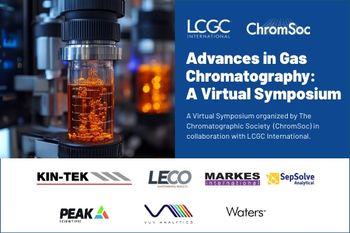
- The Application Notebook-06-01-2011
- Volume 0
- Issue 0
Cleanup of Baby Food Samples Using Gel Permeation Chromatography (GPC)
The Food Safety Modernization Act, which was recently signed into law, is the country's first major food legislation since 1938, and increases the FDA's authority over the U.S. food supply. These new regulations require that foods, including baby food, be tested for pesticide residues.
The Food Safety Modernization Act, which was recently signed into law, is the country's first major food legislation since 1938, and increases the FDA's authority over the U.S. food supply. These new regulations require that foods, including baby food, be tested for pesticide residues.
This application note illustrates the use of the AutoPrep 2000 GPC system to remove matrix interferences from baby food sample extracts prior to pesticide analysis by GC–MS.
Experimental Conditions
Eight baby foods make up 96% of all sales from the three main food manufacturers (1). Two vegetables, green beans and sweet potatoes, and two fruits, pears and peaches, were used in this study.
A 100-g aliquot of each sample was extracted by the Luke procedure (2), and divided into two aliquots. One aliquot was exchanged into 1.5 mL hexane for immediate GC–MS analysis. The second aliquot was exchanged into 10 mL of solvent for GPC cleanup. The GPC column was packed with Envirobeads S-X3 swollen with 1:1 cyclohexane:ethyl acetate and calibrated according to U.S. EPA Method 3640 to determine collection time for the pesticide residue fraction.
Results
Comparison of chromatograms from all four baby food extracts before GPC cleanup and after GPC clean-up show significant removal of matrix interferences. Overlaid chromatograms of the green bean "Extract Before GPC" and "Extract After GPC" are shown in Figure 1.
Figure 1: GCâMS chromatogram of green bean extract before (black) and after (red) GPC cleanup.
Figure 2 is the expanded total ion chromatogram (TIC) of the green bean "Extract After GPC" and NIST library search illustrating positive identification of dieldrin.
Figure 2: Expanded TIC and pesticide identification.
For complete results of this study, refer to OI Analytical Application Note # 3679 (3).
Conclusions
The AutoPrep 2000 GPC system effectively removed matrix interferences from baby food extracts prior to GC–MS analysis, facilitating pesticide peak identification and quantitation.
References
(1) Pesticides in Baby Food, Environmental Working Group,
(2) Method I for Non-fatty Foods. Pesticide Analytical Manual, Vol. I: Multi-residue Methods, U.S. FDA, College Park, MD, 1994; Section 302.
(3) OI Analytical Application Note # 3679, "Clean-up of Baby Food Samples Using Gel Permeation Chromatography."
OI Analytical
P.O. Box 9010, College Station, TX 77842
tel. (800) 653-1711, fax (979) 690-0440
Email:
Articles in this issue
over 14 years ago
Hydroxyethylstarches (HES)over 14 years ago
Aggregated Singletons for Automated Purification WorkflowNewsletter
Join the global community of analytical scientists who trust LCGC for insights on the latest techniques, trends, and expert solutions in chromatography.





